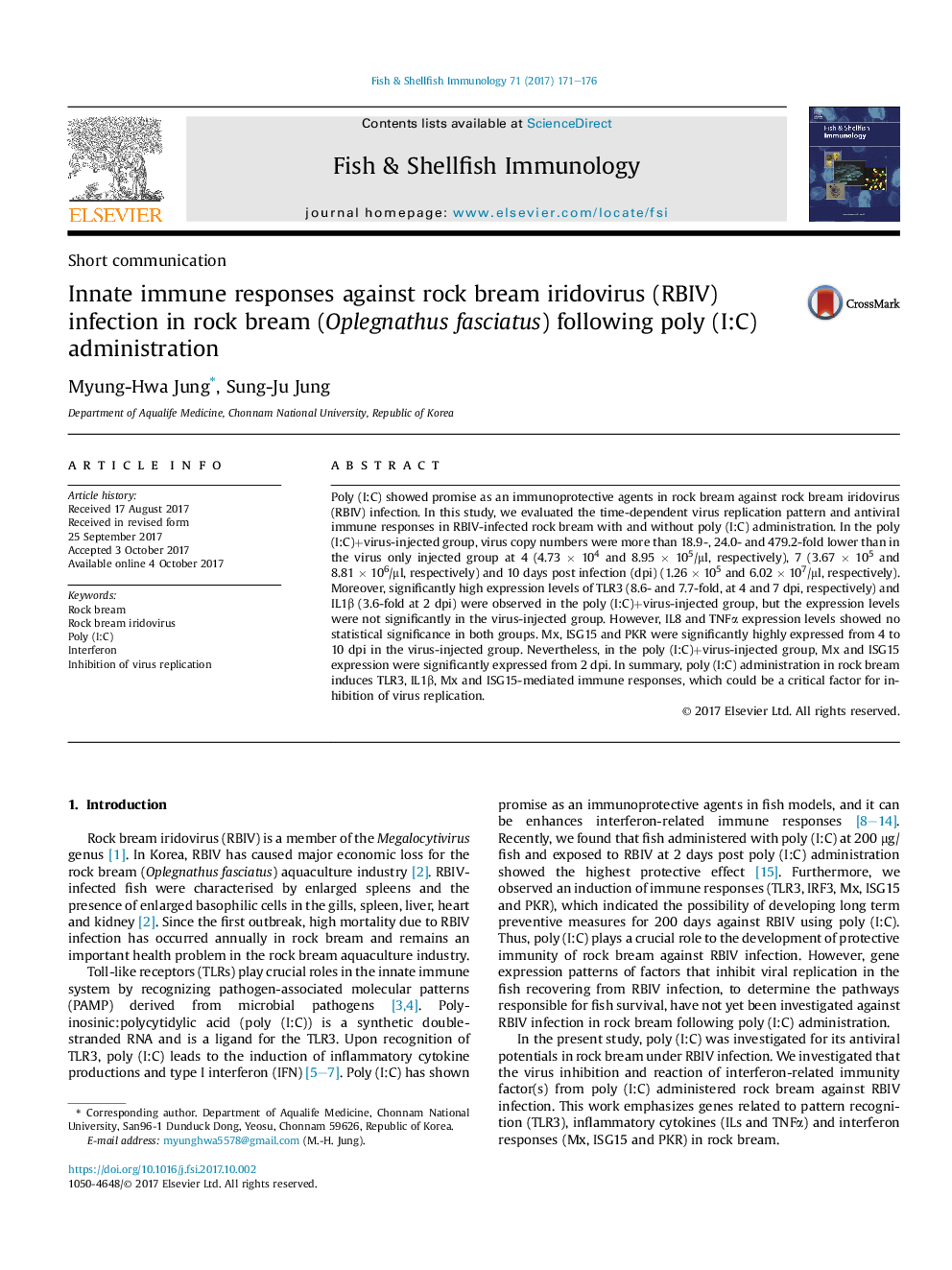| Article ID | Journal | Published Year | Pages | File Type |
|---|---|---|---|---|
| 5540362 | Fish & Shellfish Immunology | 2017 | 6 Pages |
Abstract
Poly (I:C) showed promise as an immunoprotective agents in rock bream against rock bream iridovirus (RBIV) infection. In this study, we evaluated the time-dependent virus replication pattern and antiviral immune responses in RBIV-infected rock bream with and without poly (I:C) administration. In the poly (I:C)+virus-injected group, virus copy numbers were more than 18.9-, 24.0- and 479.2-fold lower than in the virus only injected group at 4 (4.73 Ã 104 and 8.95 Ã 105/μl, respectively), 7 (3.67 Ã 105 and 8.81 Ã 106/μl, respectively) and 10 days post infection (dpi) (1.26 Ã 105 and 6.02 Ã 107/μl, respectively). Moreover, significantly high expression levels of TLR3 (8.6- and 7.7-fold, at 4 and 7 dpi, respectively) and IL1β (3.6-fold at 2 dpi) were observed in the poly (I:C)+virus-injected group, but the expression levels were not significantly in the virus-injected group. However, IL8 and TNFα expression levels showed no statistical significance in both groups. Mx, ISG15 and PKR were significantly highly expressed from 4 to 10 dpi in the virus-injected group. Nevertheless, in the poly (I:C)+virus-injected group, Mx and ISG15 expression were significantly expressed from 2 dpi. In summary, poly (I:C) administration in rock bream induces TLR3, IL1β, Mx and ISG15-mediated immune responses, which could be a critical factor for inhibition of virus replication.
Related Topics
Life Sciences
Agricultural and Biological Sciences
Aquatic Science
Authors
Myung-Hwa Jung, Sung-Ju Jung,
